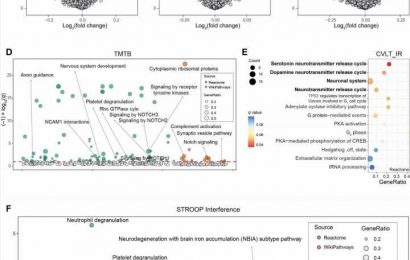
Without timely reversal, opioid overdose causes respiratory depression that may deteriorate into apnea, leading to brain injury and even death. Naloxone, a medication that rapidly reverses opioid overdose, can quickly restore normal respiration to a person whose breathing has slowed or stopped as a result of overdose with heroin or prescription opioid pain medications.
One of the major challenges in decreasing lethal opioid overdose is ensuring that naloxone reaches those in need at short notice. For opioid overdose, as for out-of-hospital cardiac arrest (OHCA), layperson response is a key link in the “chain of survival,” the complex relationship between bystanders, emergency services and hospitals. Locating a nearby volunteer with naloxone presents various challenges that may be addressed by means of collective mobilization.
In a paper published today in The Lancet‘s EClinicalMedicine journal, researchers from Bar-Ilan University and Drexel University report the results of the first observational cohort study of community members equipped with naloxone and a smartphone application to signal and respond to opioid overdoses. The cohort consisted of individuals who lived and/or worked in a neighborhood with high incidence of opioid overdose in the U.S. city of Philadelphia. After tracking the group for more than a year, the researchers showed that laypersons, including people who use opioids, can effectively signal and respond to overdose incidents to administer nasal naloxone in advance of emergency medical service (EMS) arrival.
Volunteers were trained in recognizing opioid overdose, the use of intranasal naloxone, and use of a dedicated smartphone app to signal and/or respond to a suspected overdose alert. The app was activated by volunteers witnessing an overdose to signal other nearby volunteers. The researchers looked for three possible scenarios when volunteers received an alert: those who received the alert and chose to respond and help, those who explicitly declined to respond, or those who missed/ignored the alert. The witnessing volunteer was connected to speak with 9-1-1 dispatch through a semi-automated telephone call. The primary outcome was layperson-initiated overdose reversal before the arrival of EMS/first responders.
“We observed 202 layperson-initiated overdose true alerts with a rate of layperson naloxone administration of 36⸱6% (74/202) and found that naloxone-based reversal was initiated over five minutes prior to EMS arrival in 59⸱6% of these cases,” said Prof. David Schwartz, of Bar-Ilan University’s Graduate School of Business Administration.
“We observed layperson support behaviors, including contacting EMS and remaining with the victim until recovery, that are consistent with American Heart Association guidelines and that strengthen the chain of survival that begins in the community,” added Schwartz, who led the study with Dr. Stephen Lankenau, of Drexel University’s Dornsife School of Public Health.
Equipping laypersons with naloxone and an emergency response community app to signal suspected opioid overdose and alert other nearby volunteers to provide naloxone can result in naloxone administration prior to EMS arrival and overdose reversal, potentially reducing mortality in opioid overdose. The findings support further study of smartphone-based naloxone intervention to strengthen the chain of survival starting at the community level.
Source: Read Full Article


